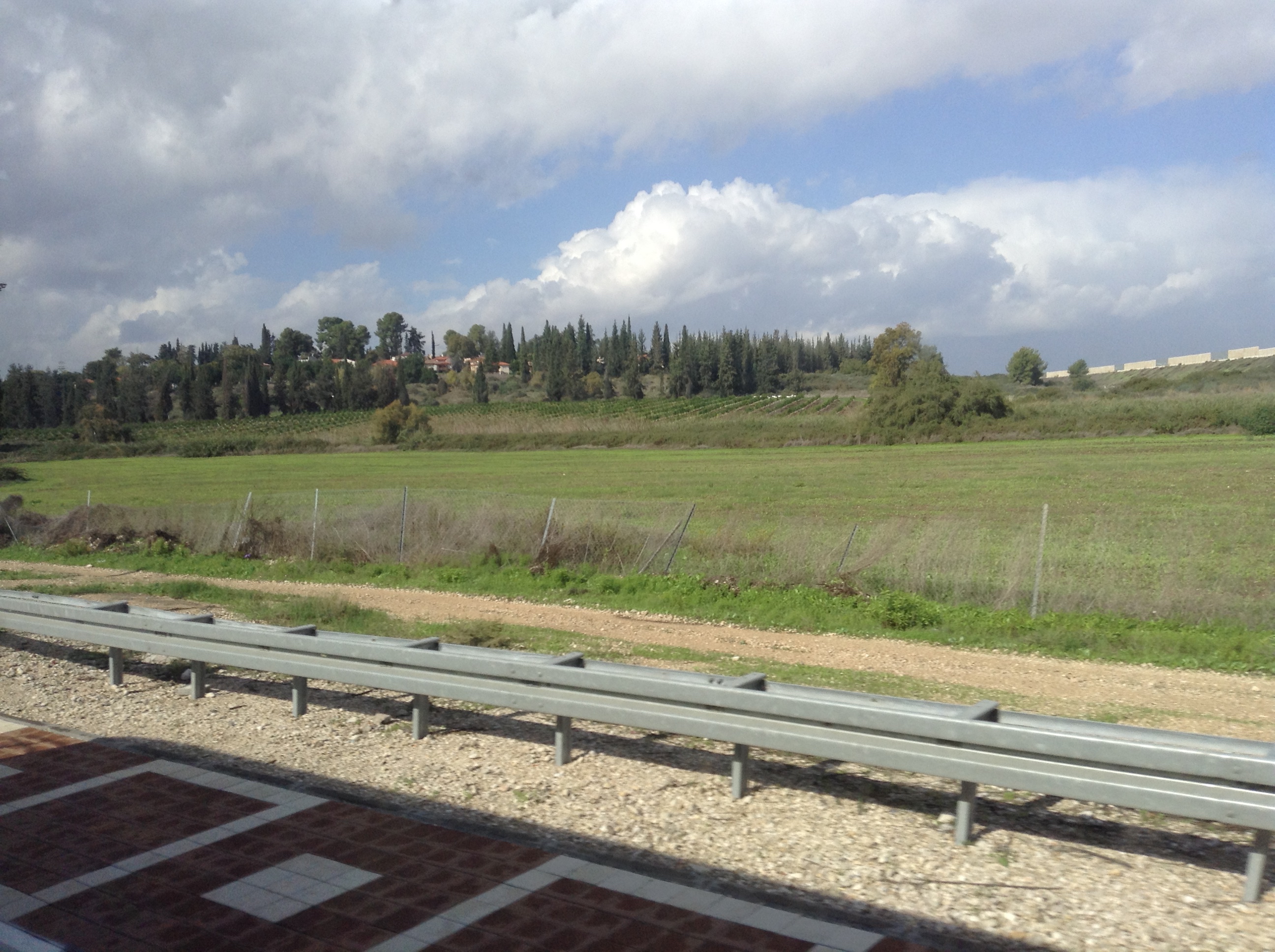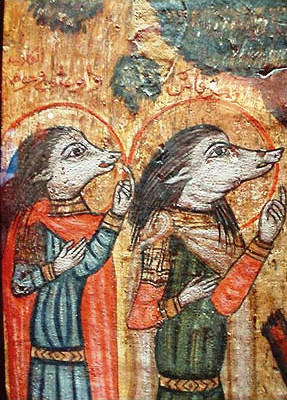|
Abuwtiyuw
The Egyptian dog Abuwtiyuw, also transcribed as Abutiu (died before 2280 BC), was one of the earliest documented domestic animals whose name is known. He is believed to have been a royal guard dog who lived in the Sixth Dynasty (2345–2181 BC), and received an elaborate ceremonial burial in the Giza Necropolis The Giza pyramid complex ( ar, مجمع أهرامات الجيزة), also called the Giza necropolis, is the site on the Giza Plateau in Greater Cairo, Egypt that includes the Great Pyramid of Giza, the Pyramid of Khafre, and the Pyramid of M ... at the behest of a pharaoh whose name is unknown. An inscribed stone listing the gifts donated by the pharaoh for Abuwtiyuw's funeral was discovered by Egyptologist George Andrew Reisner, George A. Reisner in October 1935. It was apparently part of the spolia, spoil material incorporated into the structure of a Sixth Dynasty mastaba (pharaonic-era tomb) after the demolition of the funerary chapel belonging to Abuwti ... [...More Info...] [...Related Items...] OR: [Wikipedia] [Google] [Baidu] |
George Andrew Reisner
George Andrew Reisner Jr. (November 5, 1867 – June 6, 1942) was an American archaeologist of Ancient Egypt, Nubia and Palestine. Biography Reisner was born in Indianapolis, Indiana. His parents were George Andrew Reisner I and Mary Elizabeth Mason. His father's parents were of German descent. Reisner gained B.A., M.A. and Ph.D. degrees from Harvard University, before becoming a travelling fellow. He married Mary Putnam Bronson, with whom he had a daughter, also called Mary. In 1889, Reisner was head football coach at Purdue University, coaching for one season and compiling a record of 2–1. Archaeology career Upon his studies at Jebel Barkal (The Holy Mountain), in Nubia he found the Nubian kings were not buried in the pyramids but outside of them. He also found the skull of a Nubian female (who he thought was a king) which is in the collection of the Peabody Museum of Archaeology and Ethnology at Harvard. Reisner believed that Kerma was originally the base of an Egypt ... [...More Info...] [...Related Items...] OR: [Wikipedia] [Google] [Baidu] |
Southern District (Israel)
The Southern District ( he, מחוז הדרום, ''Meḥoz HaDarom''; ar, لواء الجنوب) is one of Israel's six administrative districts, the largest in terms of land area but the most sparsely populated. It covers most of the Negev desert, as well as the Arava valley. The population of the Southern District is 1,086,240 and its area is 14,185 km2. Its population is 79.66% Jewish and 12.72% Arab (mostly Muslim), with 7.62% of other origins. The district capital is Beersheba, while the largest city is Ashdod. Beersheba's dormitory towns of Omer, Meitar, and Lehavim are affluent on an Israel scale, while the development towns of Dimona, Sderot, Netivot, Ofakim, and Yeruham and the seven Bedouin cities are lower on the socio-economic scale. [...More Info...] [...Related Items...] OR: [Wikipedia] [Google] [Baidu] |
Afterlife
The afterlife (also referred to as life after death) is a purported existence in which the essential part of an individual's identity or their stream of consciousness continues to live after the death of their physical body. The surviving essential aspect varies between belief systems; it may be some partial element, or the entire soul or spirit of an individual, which carries with it and may confer personal identity or, on the contrary, nirvana. Belief in an afterlife is in contrast to the belief in oblivion after death. In some views, this continued existence takes place in a spiritual realm, while in others, the individual may be reborn into this world and begin the life cycle over again, likely with no memory of what they have done in the past. In this latter view, such rebirths and deaths may take place over and over again continuously until the individual gains entry to a spiritual realm or otherworld. Major views on the afterlife derive from religion, esotericism an ... [...More Info...] [...Related Items...] OR: [Wikipedia] [Google] [Baidu] |
Egyptian Pantheon
Ancient Egyptian deities are the God (male deity), gods and goddesses worshipped in ancient Egypt. The beliefs and rituals surrounding these gods formed the core of ancient Egyptian religion, which emerged sometime in prehistoric Egypt, prehistory. Deities represented natural phenomenon, natural forces and phenomena, and the Egyptians supported and appeased them through sacrifice, offerings and rituals so that these forces would continue to function according to ''maat'', or divine order. After the founding of the Egyptian state around 3100 BC, the authority to perform these tasks was controlled by the pharaoh, who claimed to be the gods' representative and managed the Egyptian temple, temples where the rituals were carried out. The gods' complex characteristics were expressed in Egyptian mythology, myths and in intricate relationships between deities: family ties, loose groups and hierarchies, and combinations of separate gods into one. Deities' diverse appearances in art ... [...More Info...] [...Related Items...] OR: [Wikipedia] [Google] [Baidu] |
Cynocephaly
The characteristic of cynocephaly, or cynocephalus (), having the head of a canid, typically that of a dog or jackal, is a widely attested mythical phenomenon existing in many different forms and contexts. The literal meaning of "cynocephaly" is "dog-headed"; however, that this refers to a human body with a dog head is implied. Such cynocephalics are known in mythology and legend from many parts of the world, including ancient Egypt, India, Greece, and China. Further mentions come from the medieval East and Europe. In modern popular culture cynocephalics are also encountered as characters in books, comics, and graphic novels. Cynocephaly is generally distinguished from lycanthropy (werewolfism) and dogs that can talk. In addition, the Greeks and Romans called a species of apes cynocephalus (these apes are suspected to be baboons). Etymology The word ''cynocephaly'' is taken (through Latin) from the Greek word κυνοκέφαλοι ''kynokephaloi'', plural of the word κυνο� ... [...More Info...] [...Related Items...] OR: [Wikipedia] [Google] [Baidu] |
Anubis
Anubis (; grc, Ἄνουβις), also known as Inpu, Inpw, Jnpw, or Anpu in Ancient Egyptian () is the god of death, mummification, embalming, the afterlife, cemeteries, tombs, and the Underworld, in ancient Egyptian religion, usually depicted as a canine or a man with a canine head. Like many ancient Egyptian deities, Anubis assumed different roles in various contexts. Depicted as a protector of graves as early as the First Dynasty (c. 3100 – c. 2890 BC), Anubis was also an embalmer. By the Middle Kingdom (c. 2055–1650 BC) he was replaced by Osiris in his role as lord of the underworld. One of his prominent roles was as a god who ushered souls into the afterlife. He attended the weighing scale during the "Weighing of the Heart", in which it was determined whether a soul would be allowed to enter the realm of the dead. Anubis is one of the most frequently depicted and mentioned gods in the Egyptian pantheon, however, no relevant myth involved him. Anubis was depict ... [...More Info...] [...Related Items...] OR: [Wikipedia] [Google] [Baidu] |
Radiograph
Radiography is an imaging technique using X-rays, gamma rays, or similar ionizing radiation and non-ionizing radiation to view the internal form of an object. Applications of radiography include medical radiography ("diagnostic" and "therapeutic") and industrial radiography. Similar techniques are used in airport security (where "body scanners" generally use backscatter X-ray). To create an image in conventional radiography, a beam of X-rays is produced by an X-ray generator and is projected toward the object. A certain amount of the X-rays or other radiation is absorbed by the object, dependent on the object's density and structural composition. The X-rays that pass through the object are captured behind the object by a detector (either photographic film or a digital detector). The generation of flat two dimensional images by this technique is called projectional radiography. In computed tomography (CT scanning) an X-ray source and its associated detectors rotate around the ... [...More Info...] [...Related Items...] OR: [Wikipedia] [Google] [Baidu] |
Baboon
Baboons are primates comprising the genus ''Papio'', one of the 23 genera of Old World monkeys. There are six species of baboon: the hamadryas baboon, the Guinea baboon, the olive baboon, the yellow baboon, the Kinda baboon and the chacma baboon. Each species is native to one of six areas of Africa and the hamadryas baboon is also native to part of the Arabian Peninsula. Baboons are among the largest non-hominoid primates and have existed for at least two million years. Baboons vary in size and weight depending on the species. The smallest, the Kinda baboon, is in length and weighs only , while the largest, the chacma baboon, is up to in length and weighs . All baboons have long, dog-like muzzles, heavy, powerful jaws with sharp canine teeth, close-set eyes, thick fur except on their muzzles, short tails, and nerveless, hairless pads of skin on their protruding buttocks called ischial callosities that provide for sitting comfort. Male hamadryas baboons have large white man ... [...More Info...] [...Related Items...] OR: [Wikipedia] [Google] [Baidu] |
Crocodile
Crocodiles (family (biology), family Crocodylidae) or true crocodiles are large semiaquatic reptiles that live throughout the tropics in Africa, Asia, the Americas and Australia. The term crocodile is sometimes used even more loosely to include all extant taxon, extant members of the order (biology), order Crocodilia, which includes the alligators and caimans (family Alligatoridae), the gharial and false gharial (family Gavialidae) among other extinct taxa. Although they appear similar, crocodiles, alligators and the gharial belong to separate biological family (biology), families. The gharial, with its narrow snout, is easier to distinguish, while Morphology (biology), morphological differences are more difficult to spot in crocodiles and alligators. The most obvious external differences are visible in the head, with crocodiles having narrower and longer heads, with a more V-shaped than a U-shaped snout compared to alligators and caimans. Another obvious trait is that the upp ... [...More Info...] [...Related Items...] OR: [Wikipedia] [Google] [Baidu] |
Gazelle
A gazelle is one of many antelope species in the genus ''Gazella'' . This article also deals with the seven species included in two further genera, ''Eudorcas'' and ''Nanger'', which were formerly considered subgenera of ''Gazella''. A third former subgenus, ''Procapra'', includes three living species of Asian gazelles. Gazelles are known as swift animals. Some are able to run at bursts as high as or run at a sustained speed of . Gazelles are found mostly in the deserts, grasslands, and savannas of Africa; but they are also found in southwest and central Asia and the Indian subcontinent. They tend to live in herds, and eat fine, easily digestible plants and leaves. Gazelles are relatively small antelopes, most standing high at the shoulder, and are generally fawn-colored. The gazelle genera are ''Gazella'', ''Eudorcas'', and ''Nanger''. The taxonomy of these genera is confused, and the classification of species and subspecies has been an unsettled issue. Currently, the genu ... [...More Info...] [...Related Items...] OR: [Wikipedia] [Google] [Baidu] |
Maghagha
Maghagha ( ar, مغاغة) is a city in Egypt, located on the west bank of the Nile. It is the northernmost city in the Minya Governorate. History The old names of the town were ''Nimoui'' (, from ) and ''Gazirat al-Hagar'' ().ابن مماتي ص197 In May 1963, the ferry boat Adel capsized here, killing 206 people. In June 2007, 11-year-old schoolgirl Budour Ahmed Shaker died at a private clinic in Maghagha after an excessive dose of anesthesia while undergoing the procedure of female genital cutting, sparking widespread protests and prompting the Egyptian government to outlaw the practice by closing a legal loophole allowing it to be performed for "documented health reasons". The ban instead drove the practice underground, with doctors charging higher fees to compensate for the risk of being prosecuted. The 1885 Census of Egypt recorded Maghagha (as ''Maghaghah'') as a nahiyah in under the district of El Fashn in Minya Governorate; at that time, the population of the to ... [...More Info...] [...Related Items...] OR: [Wikipedia] [Google] [Baidu] |








